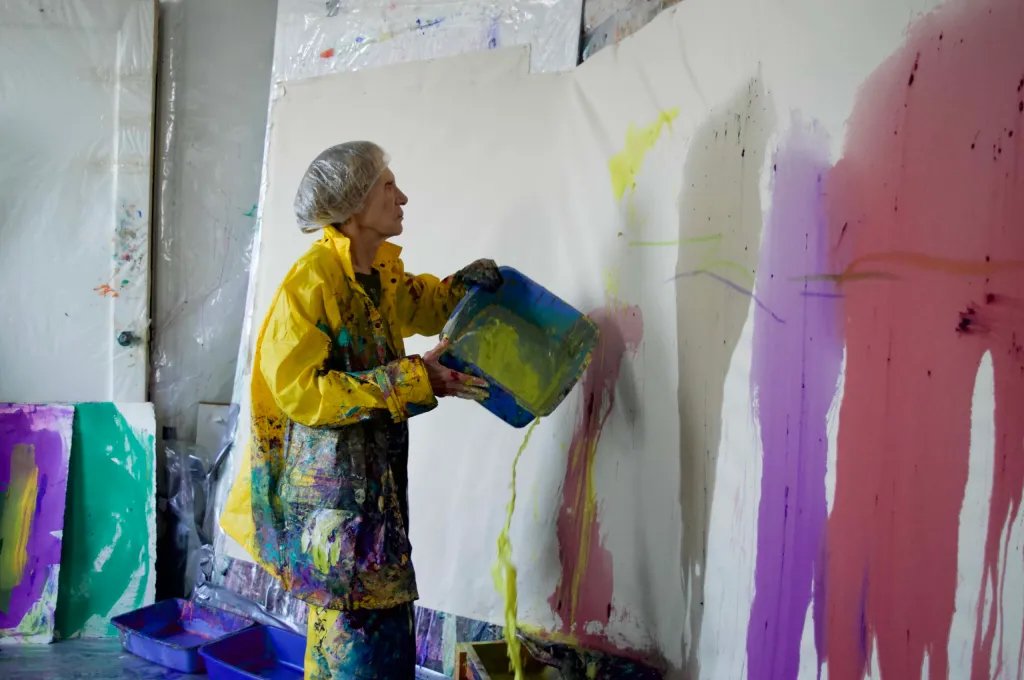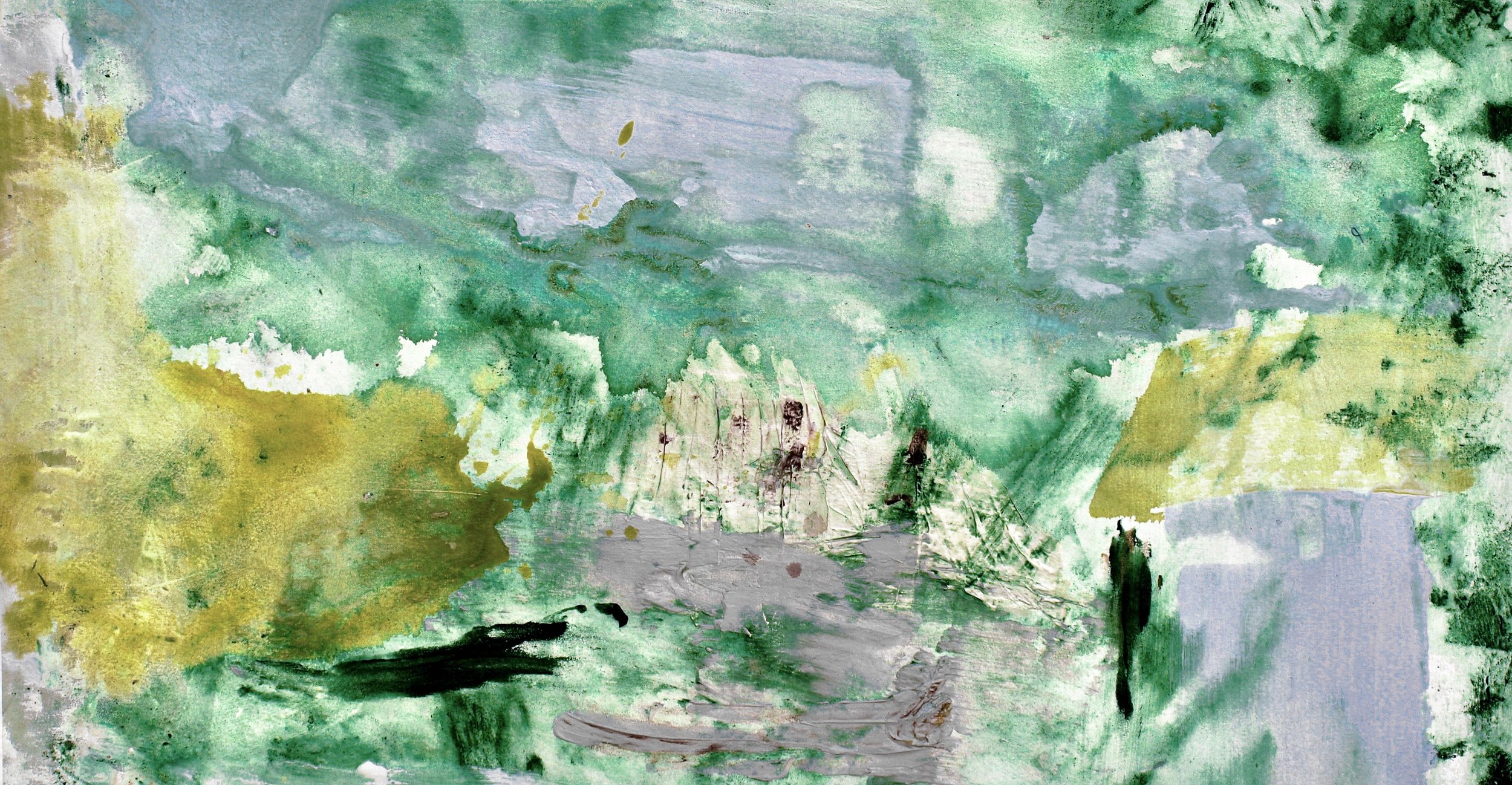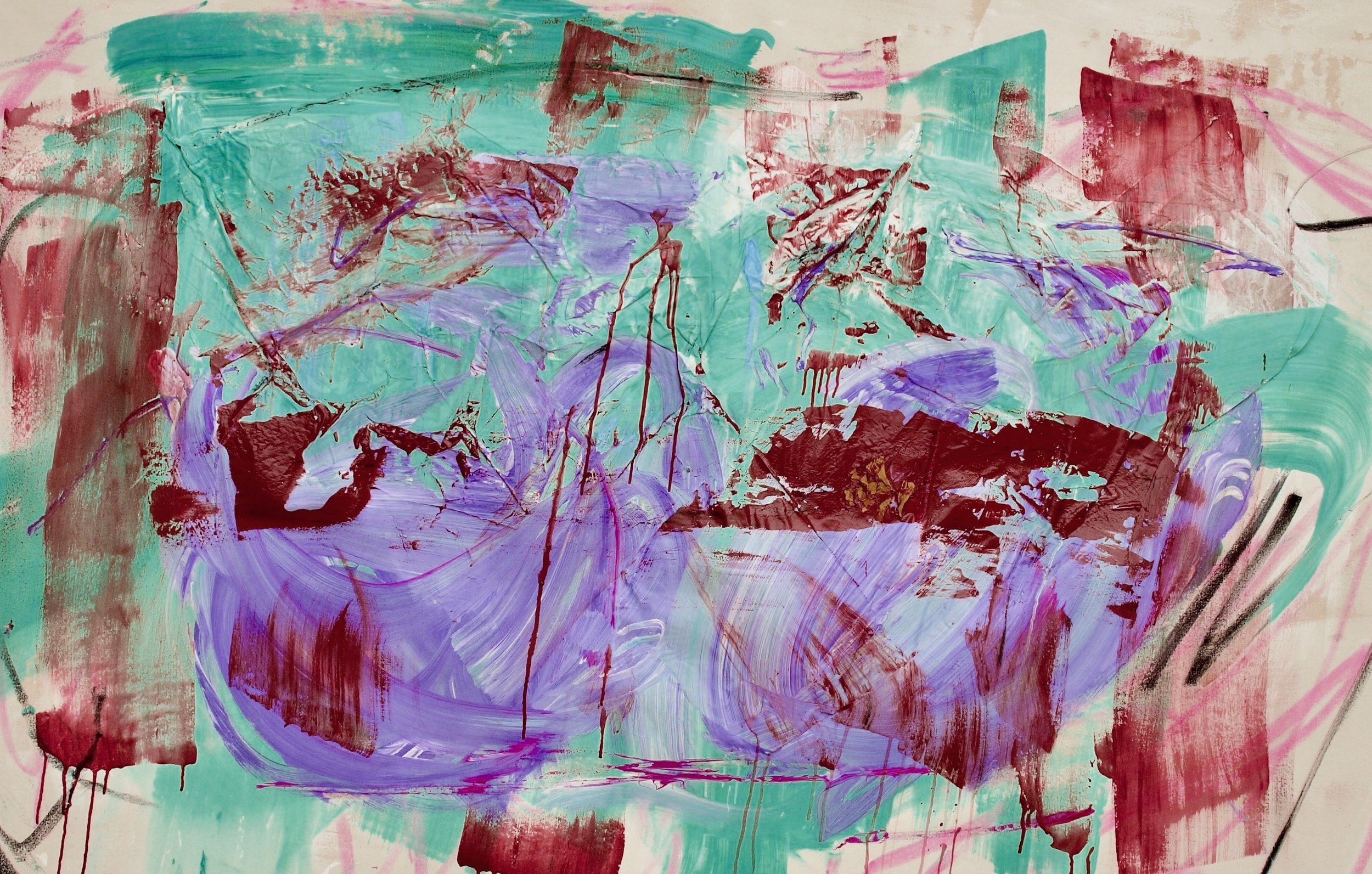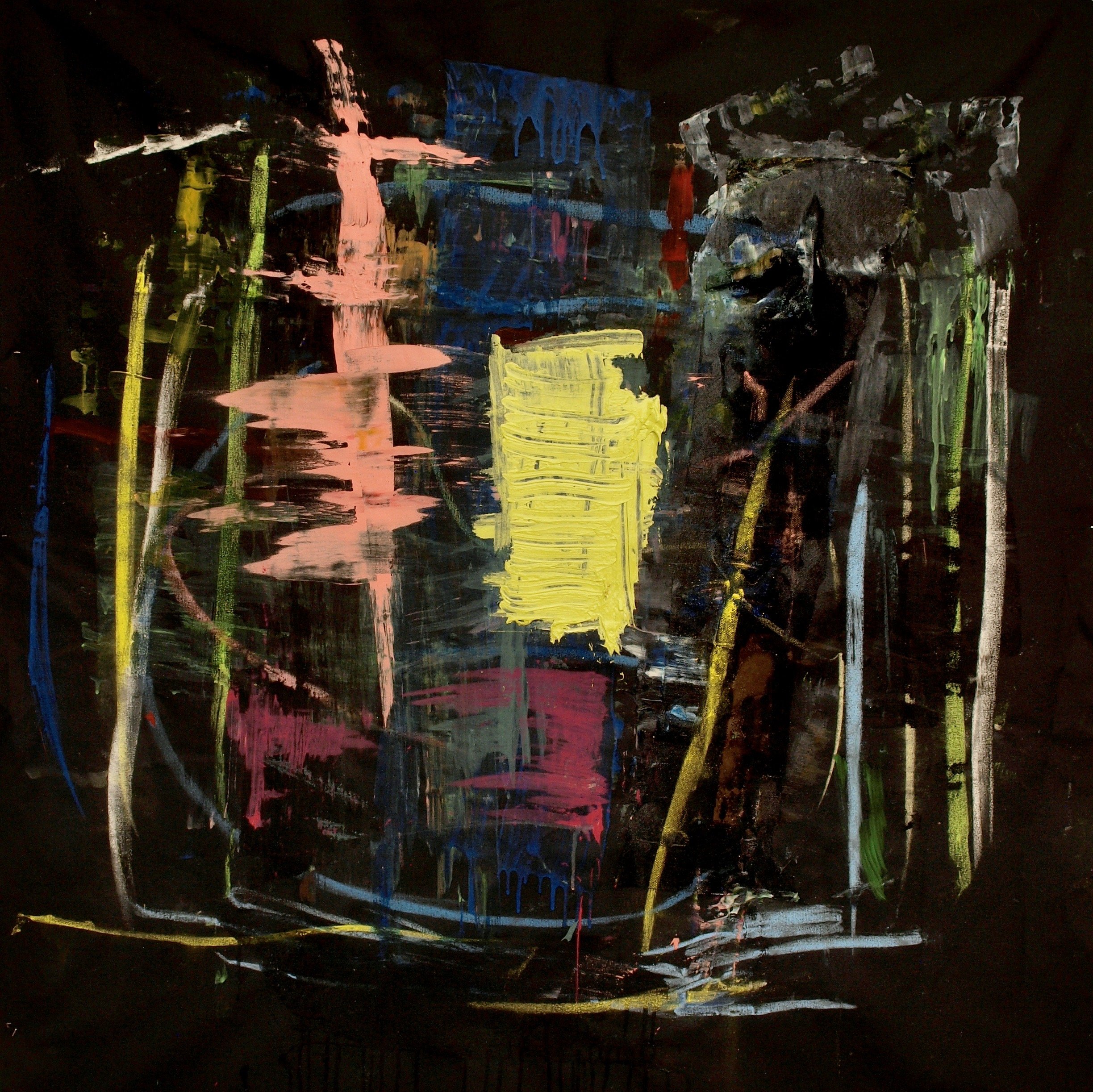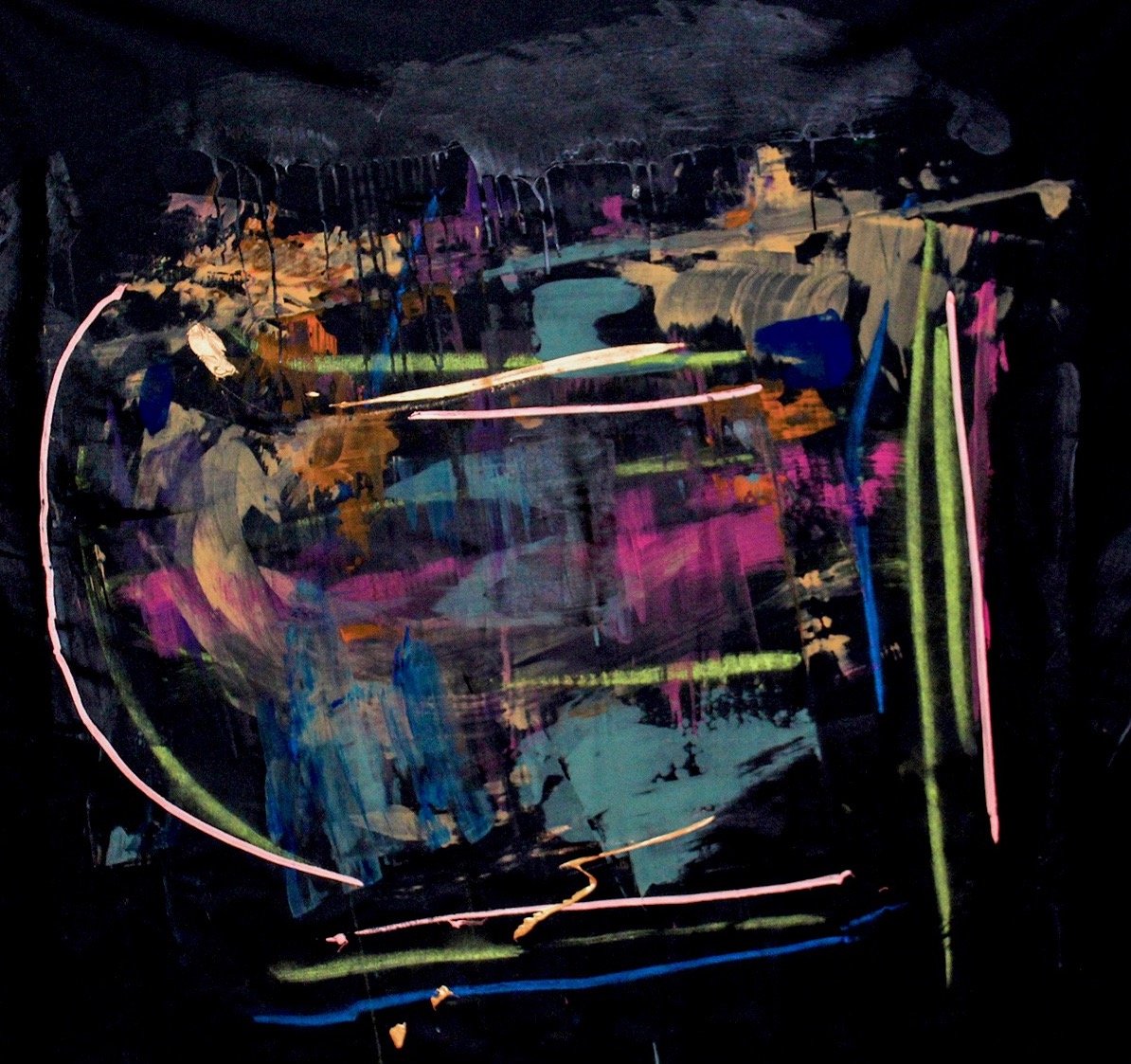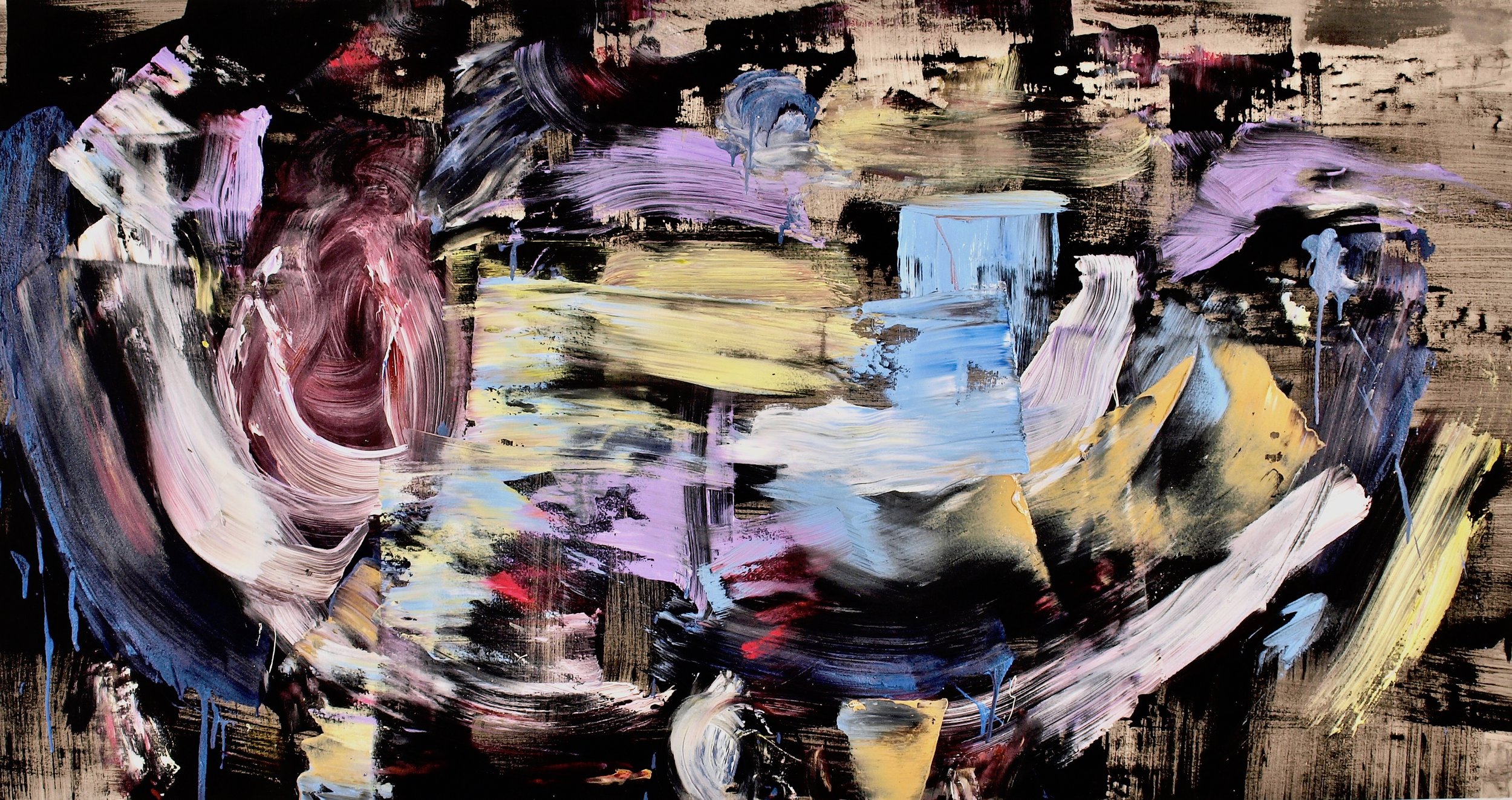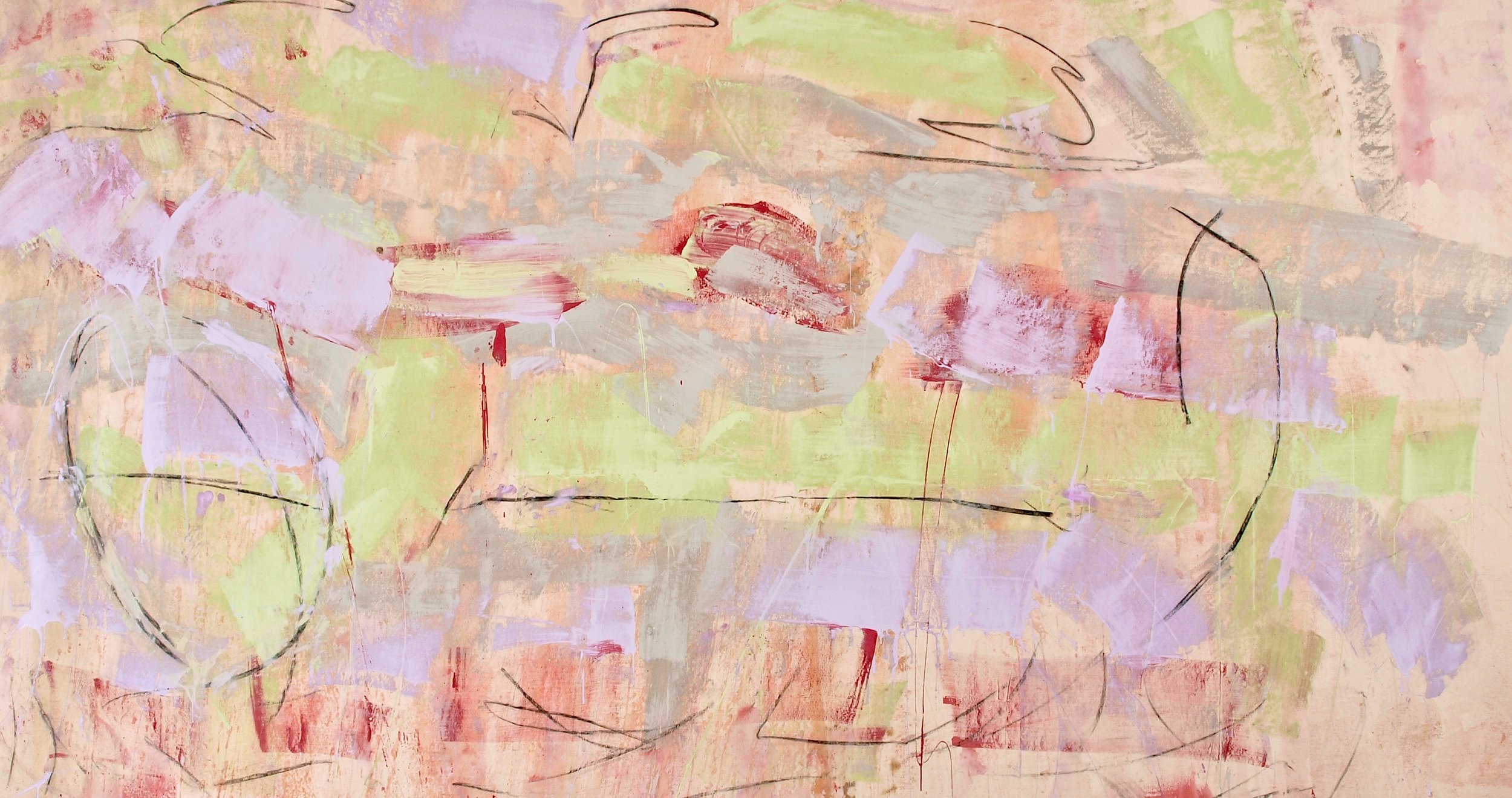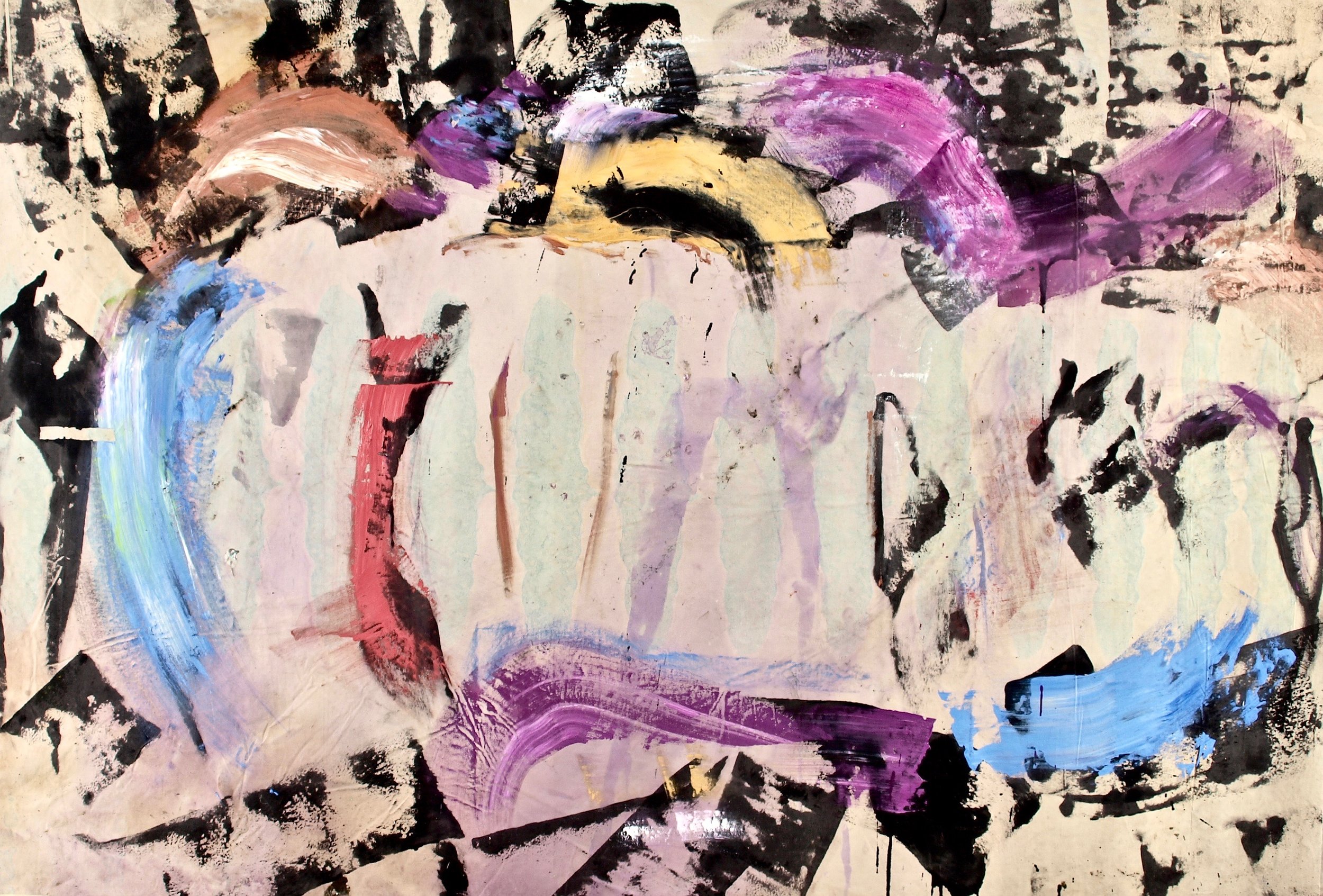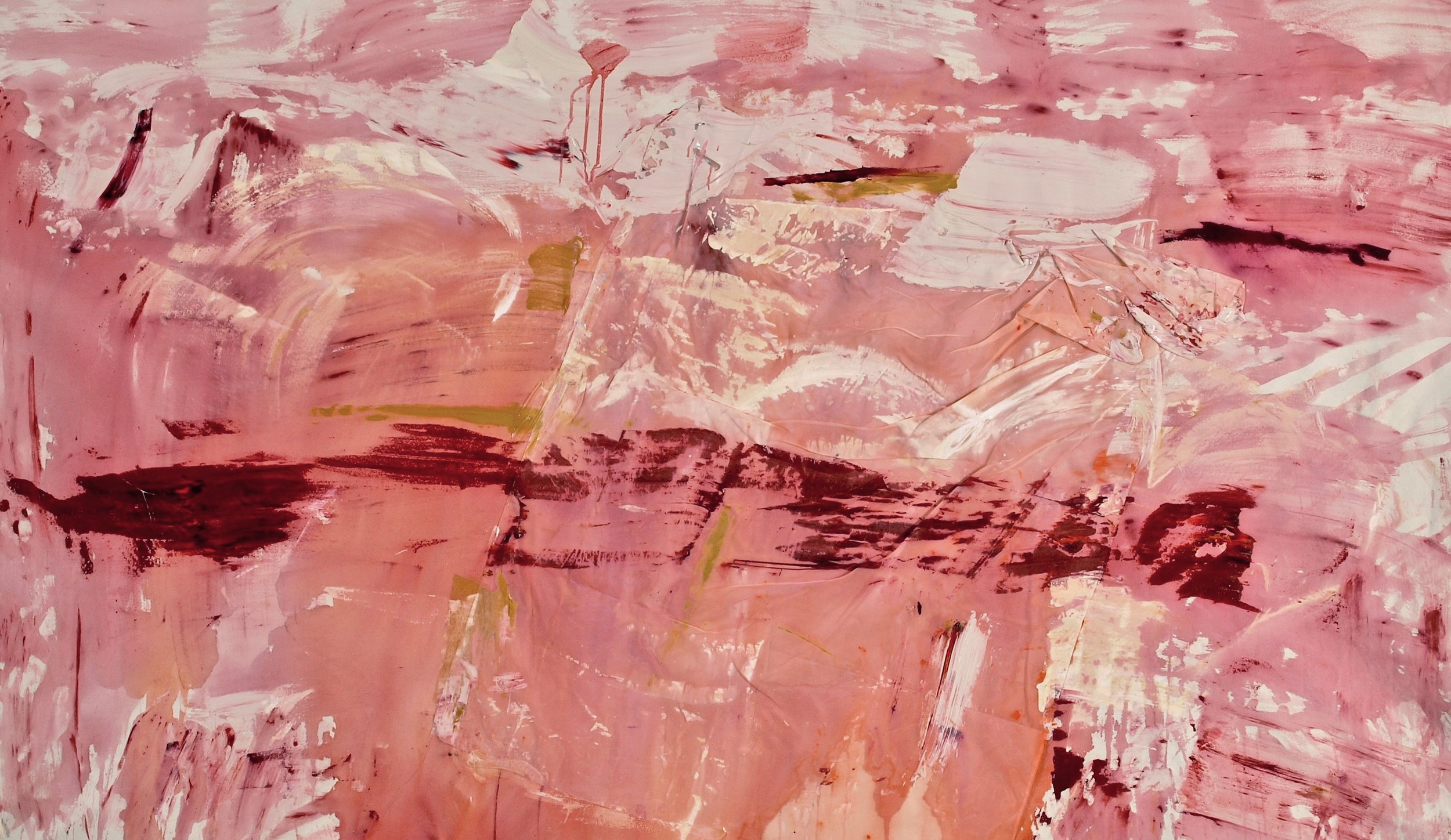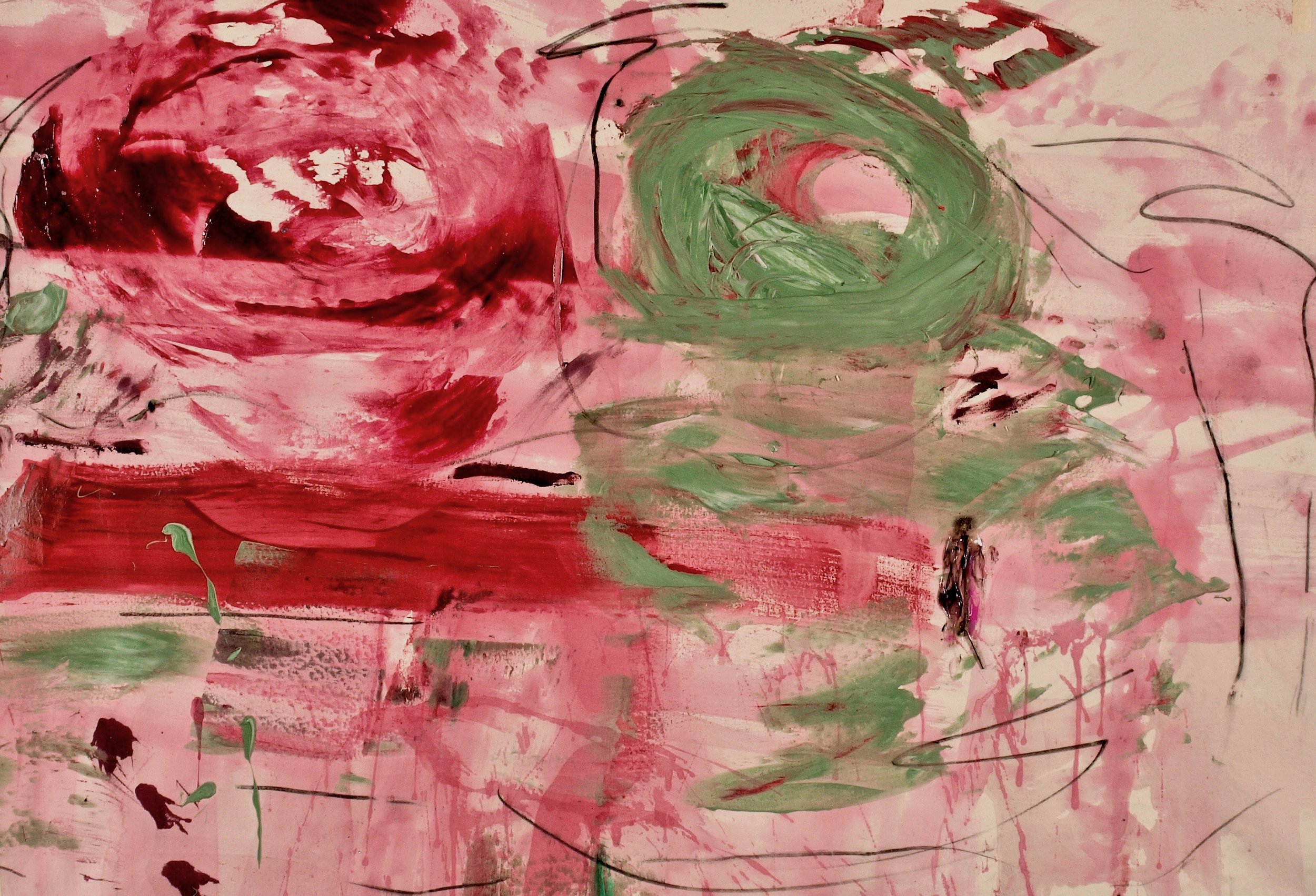The Brooklyn Rail
by Alex Grimley
November 2024
"Tint has never been wedded to a particular approach, and the pace of her experimentation has accelerated in the past five years or so. [...] In these new canvases, she finds the surface, gradually and delicately, and the sensitivity of her process, evident in each painting, affords the viewer ample space for contemplation and meditation."
Installation view: Francine Tint: In Dialogue With Helen Frankenthaler, Upsilon Gallery, 2024. Courtesy Upsilon Gallery.
FRANCINE TINT
x
YALE UNIVERSITY RADIO WYBCX
“Her works speak of a powerful and unwavering commitment to the visual and emotional vocabulary of abstract painting, and they embody the artist’s personal and deeply held belief in the power of intuitive creation.”
- Brainard Carey
Francine Tint In the Studio
WHITEHOT MAGAZINE
by David Jager
"Tint distinguishes herself through an exceptional sense of depth and breadth, building on the ‘infinite’ plane of pictorial space Jackson Pollock so adeptly opened up - exploded really - in his drip paintings. Tint gives us a pictorial plane no longer bounded by representational or narrative conventions. The space behind them, by extension, is unleashed. We could be swimming in a microcosm, or adrift in interstellar space. A sense of immense freedom engulfs us when we stand in front of them."
Click here to read the full review
THE BROOKLYN RAIL
By Robert C. Morgan
September 2023
“I suppose there are two ways to title an artist’s exhibition: one might be in direct relation to the artist’s work, while the other could provide a more poetic context that conveys a thematic position. The title of the exhibition soon to be on view at Upsilon Gallery operates on both levels, but either way it holds a certain level of significance with respect to the artist’s point of view. Indeed, some find it difficult to locate the paintings of Francine Tint at either end of the spectrum, often suggesting a juncture where the objective and subjective aspects of her paintings are not so easily divided.
More to the point, there is nothing to calculate in Tint’s work that cannot be intercepted by feeling. While some observers might disagree with this sensibility, others more familiar with the artist’s paintings will not miss her extroverted point of view. Tint’s extraordinary visual tenacity questions the regions of competence that others may take for granted. Indeed, she is the kind of master who knows and depends on her prerogatives. In her case, exaggerations are for the most part unnecessary. Rather her paintings entail a certain modesty as to how she works and thinks in the process of working. She is an artist not only within the realm of displaying her paintings for others to see, but an artist within a zone of deliberation—meaning she thinks the way she feels without confusing the two. Despite her abstractness, it requires time to view any of her paintings. One cannot see her paintings in a single glance. To come to terms with such highly personal paintings as It Won’t Let Me and The Cruel Share of Memory (both 2023) requires extended moments”.
Francine Tint, Fluid Approach, 2023. Acrylic on canvas, 27 x 51 inches. Courtesy Upsilon Gallery.
Francine Tint, Bleeding Hearts, 2023. Acrylic on canvas, 43 x 67 inches. Courtesy Upsilon Gallery.
THE WHITEHOT MAGAZINE
By Clare Gemima
September 2023
Interview with Francine Tint, the dynamic painter behind The Sky is a Mirror, of new works at Upsilon Gallery
“In the captivating narrative of Francine Tint's artistic journey, the quick witted, refreshingly honest and eccentric painter initially thrived as a costume designer and fashion stylist for luminaries like David Bowie, and basked in the glamour of the fashion world's spotlight for a nice while. Her path took an intriguing turn as she transitioned into painting, driven by an unwavering desire to wield the brush and manifest her artistic dreams. She has since never looked back.
In conversation with Clare Gemima about her most recent New York solo The Sky is a Mirror now showing at Upsilon Gallery, the 80 (going on 21) year old Tint unravels the evolution of her artistry, her background in fashion, and how the two have coalesced over the course of her career. At the core of Tint's passions lays a commitment to preserving art within the hallowed walls of museums, and an unwavering dedication to not only creating, but sharing her work critically. To this day, Francine Tint has established a long spanning position in the industry as an indelible presence in the ever-evolving landscape of female contemporary artists in America”.
THE NEW CRITERION
August 2023
by james Panero
The Critic’s Notebook
“Francine Tint: Listening To The Sublime” At M Fine Arts Galerie, Boston (September 1 Through September 30) & “Francine Tint: The Sky Is A Mirror” At Upsilon Gallery, New York (September 7 Through October 14): Writing About Francine Tint’s 2022 Exhibition At The National Arts Club, Dana Gordon Remarked How “Light Glows From These Paintings, And Their Wide Expanses Of Dominant Color Grasp The Viewer’s Attention.” Through The Use Of Negative Space And Unprimed Canvas Contrasted With Passages Of White Paint, Tint’s Abstract Compositions Permit Light Both To Soak In And Lift Off The Surface Of Her Work. With Concurrent Exhibitions Opening At M Fine Arts Galerie In Boston And Upsilon Gallery In New York, There Are Now Two Chances This Season To See These Compositions That Balance Painterly Action With A Studied, Light-Filled Repose. —JP
Francine Tint, Ski Country, 2020, Acrylic on canvas, M Fine Arts Galerie, Boston.
BROOKLYN RAIL
November 2022
By David Ebony
Francine Tint: Life in Action
The work of veteran New York abstractionist Francine Tint was championed by uber-critic Clement Greenberg late in his career, and early in hers. Tint’s work explores the realms of Abstract Expressionism and Color Field painting promoted by Greenberg, but like her friend and likeminded artist-colleague Larry Poons, Tint has followed an improvised, idiosyncratic path. She has struggled against the kind of doctrinaire formalism to which artists associated with Greenberg have often been tethered. For the past several decades, she has produced large-scale gestural paintings with brilliant color and rich impasto. Applying Hans Hofmann’s “push and pull” esthetic for her own purposes, Tint uses staccato markings and searing color in often-radial compositions to convey a wide range of mood and ambiance. She has maintained in her works over the years a consistently assured touch and an adventurous sense of color and mark-making, while avoiding any form of preciousness in the brushwork. Although she favors a forceful and sometimes-aggressive attack on the canvas, the aim is toward a kind of Zen perfection and calm in the end.
Mostly large canvases (up to 6 by 10 feet) painted within the past three years, in the midst of the pandemic, the works on view in Francine Tint: Life in Action appear as luminous and effervescent as any she has made. But within the parameters of the visual vocabulary she has established over decades, Tint reveals a highly nuanced range of emotional states—from exuberantly euphoric to introspectively pensive. Works such as Gravity’s Rainbow and Wild Strawberries (both 2022), with their bold, circular brushstrokes in hot pink, bright reds, blues, and leafy greens, convey a sense of elation while unabashedly demonstrating her painterly prowess…
THE NEW CRITERION – VOL. 41, No 4
by Dana Gordon
December 2022
Ab Ex lives – On “Life in Action,” recent paintings by Francine Tint at the National Arts Club.
Light glows from these paintings, and their wide expanses of dominant color grasp the viewer’s attention. But soon, broad and unfettered brushstrokes emerge as the most salient quality of Tint’s art. And what these brushstrokes—which are at once very wide lines and independent linear shapes—add up to is structure. Sturdy structure forms the heart of these paintings, but not just sturdy structure—exclamatory structure. The physical and emotional freedom of her brushstroke carries passion. The structure is the heart, the light and color are the soul, and the passion is the blood pulsing through it all.
Voltaire in Love (2020, third picture) is the most powerful and complex example of Tint’s expressive structure. A nearly empty middle is surrounded by broad, insistent brushstrokes, each its own color—yellow, magenta, blue, red—creating a tension of color interaction across the painting. One big, off-center red stroke interrupts the empty area, introducing its own tension and preventing the total enclosure of the inner form. The entirety of the empty inner space is then surrounded by a different pattern, a staccato rhythm of short black and white brushstrokes that contrasts with the inner structure’s vibrant color. The scale of these brushstrokes retains the same feeling of the energy of the artist’s arm as in the inner space.Homage to Artemisia (2021, first picture) takes elements used in Voltaire in Love and reassembles them into a less rigid structure that barely emerges from the interweaving of the strokes. Its interior of electric colors is again surrounded by choppy black strokes, but this time they form more of a ground on which the colored strokes play.
In Bitter Blue (2020) and Wintergarden (2021), individual vertical strokes of blue clearly announce a structure. Compositions that would otherwise appear plain are enlivened in both instances by surprising additions. In Bitter Blue, scuffy black verticals take on a charcoal-sketch immediacy, and in Wintergarden, a sudden horizontal green roadway rides over everything, establishing a sense of order. These paintings, especially Bitter Blue, bring to mind Jackson Pollock’s monumental Blue Poles (1952), a daring reference by Tint.
Free-flowing, assertive, broad brushwork is emblematic of much of Abstract Expressionism—the scale of the arm’s sweep rather than the twist of the wrist, hand, or fingers taking precedence—but not all of Tint’s paintings depend on it. The finely sketched thin black lines in Vernal Equinox (2021, second picture) are perfectly balanced against the wide but light-colored brushstrokes. These are predominantly horizontal and orderly in contrast to the black charcoal-like lines darting every which way.In Gravity’s Rainbow (2022), as in some of Tint’s other paintings, color supersedes structure as the strongest element of the painting. But it still needs structure—here provided especially by three black smears—to keep the color under just enough control.
At first, one might find Tint’s art to be about the immediacy of the paint hitting the canvas, as she lets her hand and her subconscious, in tandem with the physical quality of the paint, guide her. Complex beauty is to be found in this: a long-lived culture of such “painterly” painting includes Velázquez, Titian, and El Greco, a tradition later joined by the Impressionists and Post-Impressionists. Abstract Expressionism made this technique independent of the need to depict a narrative scene. Francine Tint has mastered this form and adds to this great inheritance.
DART INTERNATIONAL MAGAZINE
By Jen Dragon
Francine Tint: Life in Action
(New York, NY) In a New York art world that has long favored male artists, Francine Tint has always been an unabashedly female abstract expressionist painter. Once ushered into this Cedar Tavern boys’ club by the curator and art writer Clement Greenberg, Tint has held her own ever since. Her immersive painting style was not just about fierce focus and pure energy but also physical prowess as she dons fisherman-style rain gear to throw paint around freely, using large house painting brushes to create a maelstrom of paint, pigment and passion.
Tint’s most recent work in the solo exhibition Life in Action at The National Arts Club (November 7 – December 2, 2022), is a departure from her well-known bold surfaces and powerfully deep canvases to focus instead on shimmering color and effervescent light. In Pink Pearls, Tint’s gestural swirls of warm white paint dance across raw canvas acting at once as shape and form. The iridescent paints shift from lightest pearlescent lights to darker rainbow hues that compel the viewer to move back and forth in space to fully experience and encompass the light changes. Strawberry Fields reaches for bold greens and luscious pink madders that circle one another on the bare cotton canvas. A virtuoso drawn charcoal line guides and accelerates the viewer’s gaze, preventing it from resting too long in a visual stanza or traveling too far down a vortex.
Fallopian forms abound shaped by bold brushwork that describe both void and form. There is a constant balance but never a stasis as Tint rocks steadily from one end of the canvas to the other,reaching out in all directions, embracing space and being and leading the way to the sheer pleasure of vision and the divinity of true light. In thepainting, WomanSoul, Tint introduces mesh fabric elements that undulate softly with the alizarin pink brushwork. Flecked with touches of ochre, the painting presents an aquatic suspension of time and the comfort of open, embracing light.
If there is a common thread in all of Tint’s 50 year career as a painter, this would be found in her masterful ability to weave space. Moving from left to right, top to bottom, Francine Tint allows forms to undulate from front to back, and again from in to out. Whether she is building space or flying free across raw canvas, Francine Tint harnesses a powerful life force that embraces and channels the power of paint and the grace of the human spirit.
Francine Tint: Life in Action (November 7 – December 2, 2022) at The National Arts Club, Gramercy Park, New York City, NY
WHITE HOT MAGAZINE
By Jonathan Goodman
November 2022
Francine Tint at the National Arts Club
Late in her career, New York City artist Francine Tint is having a solo show at the National Arts Club. Educated at Pratt Institute and active as a painter since the 1970s, Tint makes broadly, energetically abstract expressionist paintings. They are notable for their gestural lyricism and freedom of movement. In this show of 12 paintings, called “Francine Tint: Lfe in Action” and curated by Robert C. Morgan, who has also contributed an essay to the catalogue, we have a sense of abstraction’s successful continuation, present now even after many years. Tint cites Larry Poons and Helen Frankenthaler as major influences, especially in regard to the use of bright color, something we immediately come across in Tint’s art. The show demonstrates the extent to which abstract expressionism can still vibrantly exist, at a good distance from the high point of the movement. The style, originated in New York City, remains a quintessentially urban statement, one large enough to support contemporary art made in a similar manner. Tint, a mature artist who has been working in the city for many years, doesn’t repeat so much as re-envision a way of working whose openness and enthusiasm continues our urban predilection for the animation, even the turbulence, of the street…
FROM THE MAYOR’S DOORSTEP
By Piri Halasz
November 2022
Francine Tint At the National Arts Club
One might never guess it to look at the svelte and poised little lady known as Francine Tint, but inside her lurks the swashbuckling scenario of those dashing, mustachioed buccaneer-types whose whiplash sword's play animates movie classics from The Sea Hawk to Crouching Tiger, Hidden Dragon. That, at any rate, is the impression one gains from the twelve large to very large and generously animated abstract paintings that constitute "Francine Tint: Life in Action," as curated by Robert C. Morgan and viewable seven days a week from 10 to 5 in the National Arts Club at 15 Gramercy Park South (through December 2).
Dramatizing the vigor with which the acrylic paint is laid on is the profusion of circles employed, sometimes giving the impression of whirlpools or aerial views of cyclones. This is especially apparent in the second of the two large galleries devoted to the show. On the day I visited, a TV program was being shot in the first gallery, so I was ushered first into the second gallery. Among the paintings in this second gallery that emphasize circles are "Terra" (2022), "Wild Strawberries" (2022) and "Roundhouse" (2022).
The mood changed, however, when I was able to move into the first gallery. Tempering the drama and lending it gentleness are the pale colors employed by so many of the paintings here, the thinness with which the paint is so often laid on, the generous areas of canvas left bare, and the use of quiet lines of charcoal. This uplift and stabilization of mood was particularly striking if one entered the first gallery directly from the second, and saw a lineup of three canvases on the facing wall, all serenely heavy on whites, off-whites and/or bare canvas: "Harmony of Silence" (2022),"Astro World" (2022) and "Winter Garden" (2021)…
ART INTERNATIONAL
by Dominique Nahas
“…The simplicity belies their strength, that belongs entirely to the “period” – to the substance of paint itself. It’s in the layering of paint rather than in the graphic character of her art that Tint’s true power as a painter lies.”
Tiger, 2017, acrylic on canvas, 55 x 92 in.
Sea Garden, 2017, acrylic on canvas, 75 x 54 in.
THE OBSERVER – February, 2015
By Piri Halasz
Reinvention: Francine Tint’s Abstractions Evolve at Walter Wickiser Gallery
I do like an artist who evolves. Some artists who evolve don’t improve upon their earlier work, but that’s the risk they have to take—and I salute those who take it. In that category, at Walter Wickiser Gallery in Chelsea we have “Francine Tint: Echo and Shadow,” up through February 25. Technically, this is only half of a two-person show, but Ms. Tint’s 14 paintings—ranging in size from small to large, and all pure abstractions—occupy the large central space in this gallery and the larger of its two side spaces. She deserves the real estate she’s given here on the grounds of art-world longevity alone, although there are aesthetic reasons to be very enthusiastic about almost everything in this show. But if ever there was an artist who has paid her dues, that is Francine Tint.
A native of Brooklyn, she has studied at not one but three art schools—the Brooklyn Museum School, Pratt Institute, and the New York Studio School of Drawing, Painting and Sculpture in Manhattan. Since the turn of the century alone, she has had 10 solo exhibitions, four of them in New York, and participated in 20 group exhibitions, twelve in New York. During that same period, her work has been seen in art fairs from Southampton to San Francisco. Nor is she a stranger to her fellow artists, getting around to more openings than you can keep track of: her smiling face adorns any number of festive photos on Facebook.
Come Away With Me
2013, Acrylic on Canvas, 50 x 62 In.
I have thought highly of the pioneer Abstractionist’s work for years, but was accustomed to thinking of it in terms of long, languorous sweeps of gel-raised and luscious but closely-valued colors—kind of an august Jules Olitskian Götterdämmerung. But there is little if anything like that here.
In brief, Ms. Tint, well into her career, has been experimenting. She has been working long and hard to differentiate her work from its former context and time frame, doing her best to drag her own unique brand of Color Field painting, more than three decades after she first premiered it, kicking and screaming into the 21st century.
But this new body of work is a change. To begin with, it’s not as leisured, swooping and voluptuous as of old. Brushwork is now much more agitated, flustered, vehement, and even aggressive, with short, sharp, staccato bursts of color. One way or another, the impression conveyed is of a lot of action—more action, in fact, than some of the canvases of those earlier Abstract Expressionists officially known as “action painters.”
Love Goddess
2012, Acrylic on canvas, 48 x 98 In.
There’s lots less gel (though with a few grace notes of it), lots more scrubbing and scraping of the paint, lots more curved or straight sweeps of it, brusquely abbreviated. More pictures have matte surfaces; almost none have glossy ones. Colors are brighter, with much more vigorous color contrasts, and Ms. Tint has taken to emulating Manet, Goya and Velázquez in using black as a color more often. But in one case, she works with a mostly white field, as did Helen Frankenthaler in the ’60s—but, if only because Ms. Tint is stroking the paint onto her canvas instead of staining it in, the two artists’ pictures don’t further resemble each other.
In the ’70s, Frankenthaler also drew a lot of lines upon her canvases. I never felt they worked very well for her, but now Ms. Tint is using a lot of lines (usually black) and they mostly come off much better. One reason may be because her lines are more emphatic, more confident. For whatever reason, they operate as independent entities, sitting on the surface of the field of paint. In the process, they establish a figure-ground relationship (whatever happened to Greenbergian “flatness”?). Furthermore, when the field underneath such lines contains a lot of blue and/or green, the painting takes on the appearance of an underwater panorama, its blues and greens sinking tumultuously into a still totally abstract space suggestive of water. Lovely.
There are so many good paintings in this show that I can’t possibly comment on them all. But don’t miss Lost Horizon (2013); Conjurer (2011); Sea & Sardinia (2015); Night of the Iguana (2015); Black Opal (2012); Come Away with Me (2013); and Fishnet (2014).
ART IN AMERICA – October, 2008
By Karen Wilkin
Francine Tint at Tria
Irish Smoke, 34×105, 2007
Asked for advice by young artists, in the days before unfledged MFA candidates were guaranteed more attention than seasoned practitioners, Clement Greenberg often urged them to “live a long time.” The history of van Gogh’s sales, the critic would explain, suggested that he would have died a rich man, if he hadn’t killed himself at 37. But Greenberg’s reply also arose from his belief that making art required a long-term commitment to the exploration of its possibilities.
Witness Francine Tint, who is no novice. For decades, she has been making abstract paintings based on the unpremeditated manipulation of materials. Her strengths have always been her idosyncratic sense of color, her ability to draw energetically at large scale, and her refusal to make ingratiating pictures. In her recent work, her audacity is undiminished than ever, and her drawing — sometimes manifest as line, sometimes assigned to the edges of color incidents –even more unpredictable.
The drama in the nearly 9-foot-wide Irish Smoke (2007)resides largely in the oddness of Tint’s palette, a near-rococo combination of rose, moss green, silver gray, golden yellow and murk that somehow invokes both urban cacophony and landscape. In Object of Desire (2008; 48 by 69 inches), a slapdash expanse of cinnabar red punctuated with swipes of strange greens and blues, the astringent color is still the driving emotional force, but it has to compete with emphatic surface inflections and over-scale loopy drawing. Tint has remained true to her original convictions about what a painting can be, yet her vigorous, street-smart recent works seem utterly of the moment.
When she first began exhibiting 25 years ago, her work announced her solidarity with color-based abstractionists even through Tint’s rough-hewn canvases often seemed quirkier and brasher than theirs. Today, her still notably quirky and brash pictures demand to be read differently. With their acerbic hues and fierce gestures, they can be seen as both affirmations of her belief in the power of intuitive, non-figurative painting and as a non-ironic commentary on, say, Gerhard Richter’s simulacra of color-based, gestural abstraction. Tint’s aims haven’t changed, but the context for her work has, allowing — or forcing — us to consider it in new says.
ART IN AMERICA – March, 1998
By David Ebony
Regarding Big Thunder:
“The artist shows a gray expanse activated by an allover pattern of hazy, circular scrawls in ocher, like dissipating letters written by a skywriter in a storm. The emphasis in this luminous work is on the sensual properties of color and surface.”

